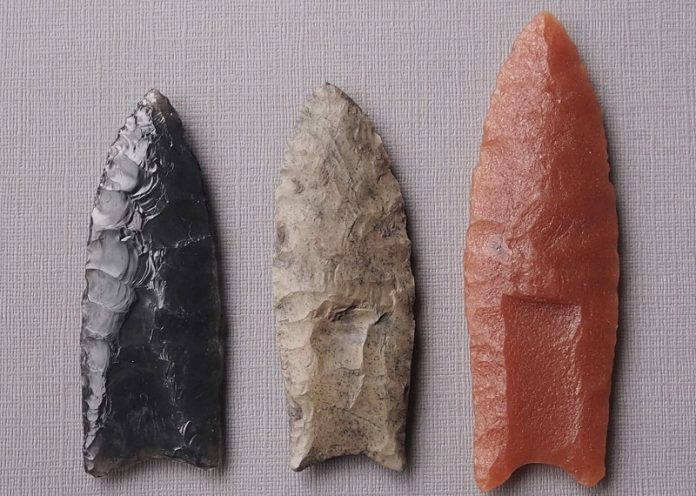
Forget what you’ve seen in movies—early humans didn’t take down mammoths by throwing spears.
Instead, they used a smart and strategic method to hunt these giant animals during the Ice Age, researchers say.
For a long time, archaeologists have wondered how people 13,000 years ago used sharpened rocks, called Clovis points, to hunt massive animals like mammoths and mastodons.
Did they throw spears tipped with these sharp rocks?
Did they surround the animals and jab at them? Or did they simply scavenge from animals that were already injured?
New research from the University of California, Berkeley, suggests that none of these theories are correct. Instead, early humans might have used a technique where they planted their spears in the ground, pointing them upward.
When a huge animal like a mammoth charged, it would run into the spear, driving the sharp point deep into its body.
This method allowed the hunter to use the animal’s own force to deliver a deadly blow—something that would be hard to achieve by throwing a spear.
To investigate this idea, archaeologists looked at historical evidence from around the world, where similar hunting techniques were used.
They also conducted experiments with stone weapons to see how spears would react to the force of a charging animal.
The results showed that once the spear’s sharp point pierced the animal’s flesh, the weapon acted much like a modern-day hollow-point bullet, causing serious damage to the animal.
“This ancient Native American design was an amazing innovation in hunting strategies,” says Scott Byram, a researcher at Berkeley’s Archaeological Research Facility and lead author of a paper on this topic.
His team’s findings were published in the journal PLOS ONE.
This research could help solve a long-standing mystery in archaeology: how did early humans in North America use Clovis points, one of the most commonly found artifacts from the Ice Age? Clovis points, named after the town of Clovis, New Mexico, where they were first discovered, are carefully shaped stones with razor-sharp edges.
They were made from rocks like chert, flint, or jasper and ranged in size from a thumb to a midsize iPhone. Thousands of these points have been found across the U.S., some even embedded in mammoth skeletons.
While movies and video games often show people using these points to throw spears at large animals, Byram and his coauthor, Jun Sunseri, believe that this method would be risky. Early humans had limited resources, and the right kind of rocks and spear poles might be hard to find. Throwing a spear and missing could mean losing a valuable tool.
Instead, the researchers suggest that early humans might have built their spears as part of a system designed to be planted in the ground. The force from a charging animal would then drive the spear into its body, making it a more effective hunting tool.
To test their idea, the researchers built a simple platform that could measure how much force a spear system could withstand before breaking. They found that their setup could handle the intense force generated by a large animal, supporting their hypothesis.
This idea isn’t entirely new—planted pikes were used in historical warfare to stop charging horses and in hunting dangerous animals like boars and bears. However, it hasn’t been widely discussed in the context of Ice Age hunting until now.
In the coming months, Byram and his team plan to build a replica of a mammoth and simulate what an attack might have looked like using a planted Clovis-tipped spear.
“Sometimes in archaeology, the pieces just start fitting together,” Byram says. “This new understanding of Clovis technology opens up a whole new way of looking at how early humans lived and hunted among these incredible animals during much of human history.”



